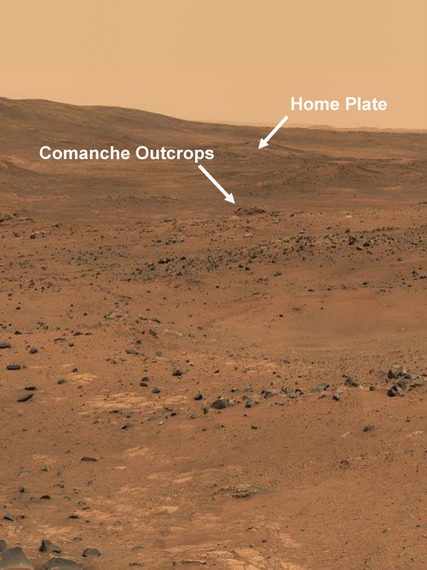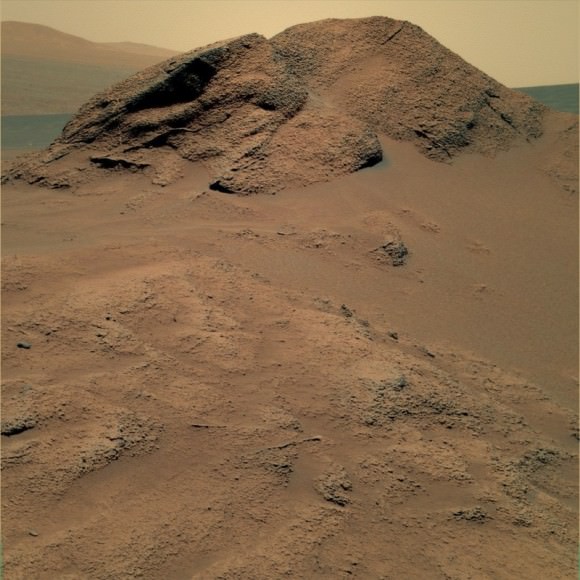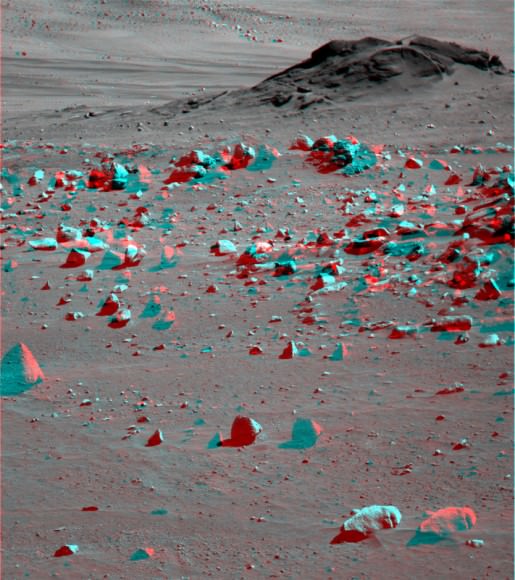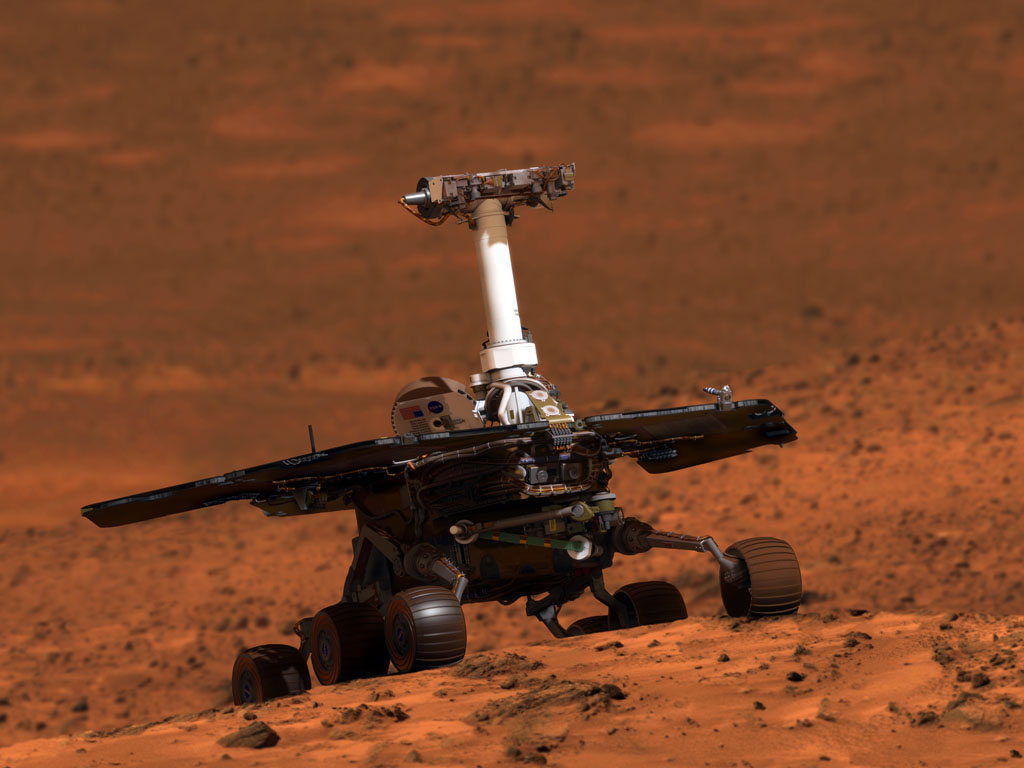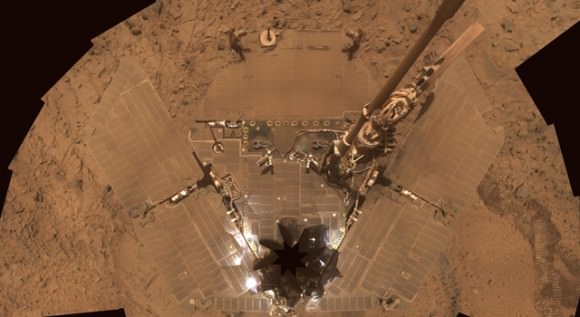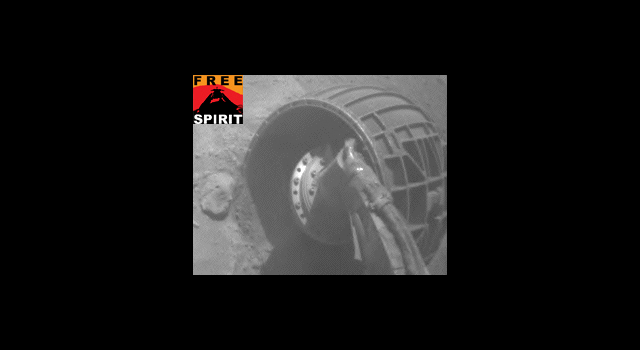[/caption]
She may be down, but she’s not out – out of the discovery department, anyway. Data from the Spirit Mars rover – currently in hibernation – shows evidence that water, perhaps as snow melt, trickled into the subsurface fairly recently and may be doing so on a continuing basis.
The area where Spirit became stuck in sandy soil in April of 2009 was churned up by her spinning wheels as engineers at the Jet Propulsion Laboratory attempted to drive her out of a veritable sand trap. This wheel-churning brought subsurface soil layers — which include the water soluble mineral ferric sulfate — up to the surface. Under a thin covering of windblown sand and dust, relatively insoluble minerals such as hematite, silica and gypsum are concentrated near the surface and more-soluble ferric sulfates have higher concentrations below that layer. This pattern suggests water has moved downward through the soil, dissolving and carrying the ferric sulfates.
In combination with another recent discovery — that underground aquifers may have fed ancient seas on Mars — shows a water cycle likely was present in the past on the Red Planet, and may even be present today.
The deputy principal investigator for the Spirit and Opportunity rover, Ray Arvidson and his team say that thin films of water may have entered the ground from frost or snow. (The Phoenix lander saw evidence of current snowfall.) The seepage could have happened during cyclical climate changes in periods when Mars tilted farther on its axis.
“The lack of exposures at the surface indicates the preferential dissolution of ferric sulfates must be a relatively recent and ongoing process since wind has been systematically stripping soil and altering landscapes in the region Spirit has been examining,” said Arvidson.
This isn’t the first time that Spirit’s wheels have churned up interesting stuff. Back in 2008, researchers said Spirit’s bum front wheel uncovered signs minerals that are found in hot springs, similar to what is at Yellowstone National Park on Earth, and similar hot springs may have once bubbled or steamed on Mars.
But there’s been no word from the rover since March 22, 2010, after she went into cold-induced hibernation. Because Spirit was stuck, the rover drivers could not get her in the best position to receive maximum sunlight.
“With insufficient solar energy during the winter, Spirit goes into a deep-sleep hibernation mode where all rover systems are turned off, including the radio and survival heaters,” said John Callas, project manager for Spirit and Opportunity. “All available solar array energy goes into charging the batteries and keeping the mission clock running.”
While she was stuck and still awake, researchers took advantage and examined in great detail soil layers the wheels had exposed, and also neighboring surfaces, making comparisons between the two. While trying to drive back out of her predicament, Spirit made 13 inches of progress in its last 10 backward drives before energy levels fell too low. Those drives exposed a new area of soil for possible examination if Spirit does awaken and if its robotic arm is still usable.
However, it is thought that the aging Spirit rover experienced the coldest temperatures ever, and it may not survive. Everyone is still holding out hope that the rover may yet make contact through one of the orbiting spacecraft and the Deep Space Network.
If Spirit does get back to work, the top priority is a multi-month study that can be done without driving the rover. The study would measure the rotation of Mars through the Doppler signature of the stationary rover’s radio signal with enough precision to gain new information about the planet’s core.
Meanwhile, over on the other side of Mars, the rover Opportunity has been making steady progress toward a large crater, Endeavour, which is now approximately 8 kilometers (5 miles) away.
The newest findings were published in the Journal of Geophysical Research.
Source: JPL

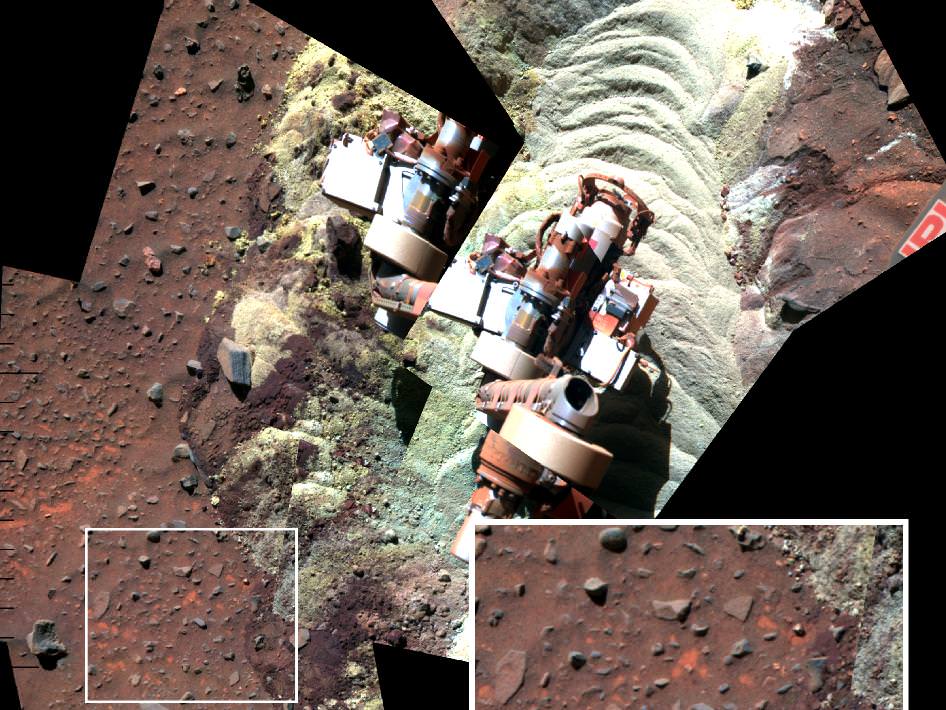


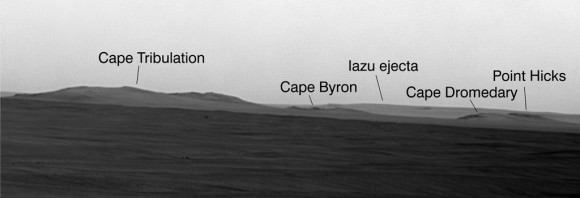
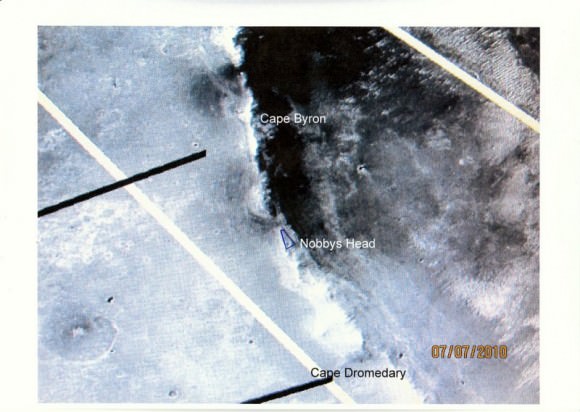
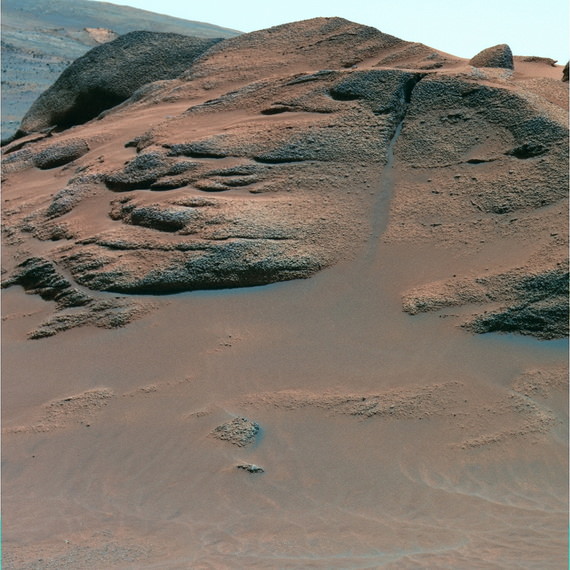
![Locator image for Comanche outcrops in the Columbia Hill of Gusev Crater, Mars. Yellow line marks Spirit’s traverse. Pancam panoramic images were taken near the true summit of Husband Hill (Everest Pan) and at the location of the Seminole outcrop. Spirit is currently located on the left side of Home Plate. Image width is ~1000 m. Image courtesy of NASA/UA/HiRISE using PSP_001513_1655_red image. After Arvidson et al. [2008]](https://www.universetoday.com/wp-content/uploads/2010/06/spirit-location.jpg)
